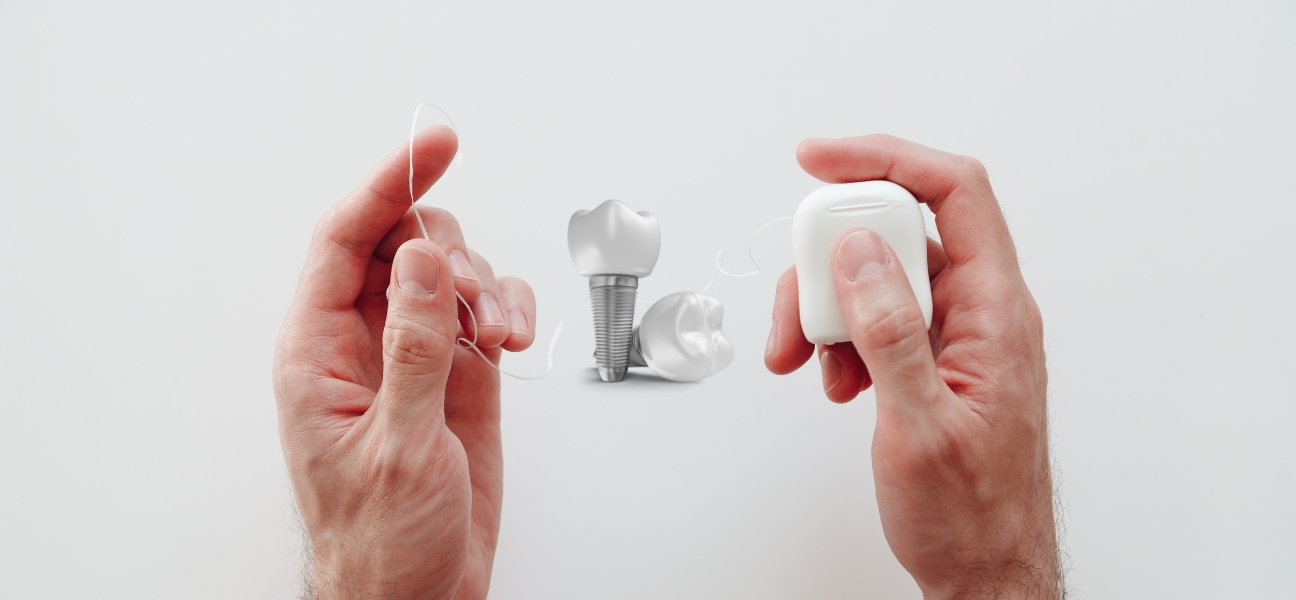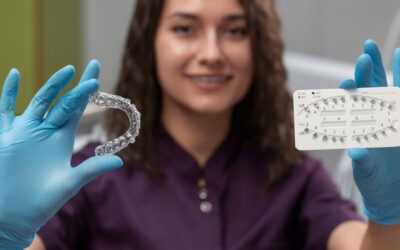Did you know that over 3 million Americans have dental implants, and this number is growing by 500,000 annually? Proper flossing is crucial to maintain these implants and ensure a vibrant, healthy smile.
This guide offers a detailed, step-by-step approach to flossing All-on-4 dental implants. Expert advice and reliable sources provide accurate, actionable information to help you master this essential oral hygiene practice.
By following these techniques, you can prevent gum infections and implant failure, ensuring your dental implants last for years. Later sections will explore professional services available at Frankfort Smiles Dental for those seeking specialized care local to our office!
Key Takeaways
- Regular flossing prevents gum infections and implant failure.
- Proper techniques extend the life of your dental implants.
- Expert guidance ensures effective oral hygiene practices.
- Specialized services are available at Frankfort Smiles Dental
Understanding All-On-4 Dental Implants
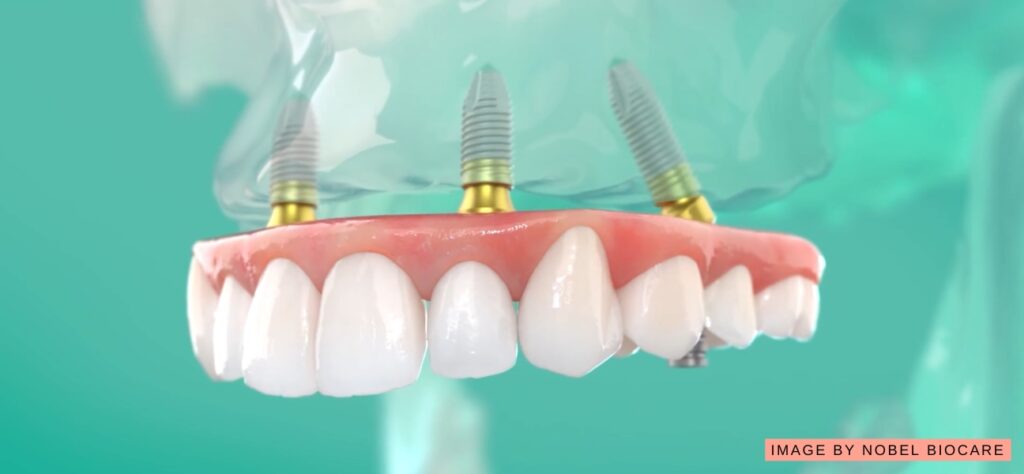
All-On-4 dental implants are a revolutionary solution for individuals seeking a permanent fix for missing teeth. These implants consist of four strategically placed titanium posts in the jawbone, supporting a full-arch prosthesis. This method offers a natural appearance and durability, making it a popular choice among those looking for a long-lasting solution.
What Are All-On-4 Implants?
All-on-4 implants are a revolutionary dental restoration option designed for patients seeking a permanent solution for missing teeth. This innovative technique utilizes four strategically placed dental implants to support a full arch of replacement teeth, providing both function and aesthetics. For optimal oral health, it is essential to maintain proper oral hygiene with all-on-4 implants. This includes regular brushing and flossing using a soft-bristled toothbrush and super floss to effectively clean all-on-4 dental implants and reach tight spaces around the bridge and between the implants.
To achieve this, you should gently slide the floss around the implants, ensuring to pass the floss and move the floss gently to avoid damaging the surrounding tissue. Regular professional cleaning at Frankfort Smiles Dental is also crucial for the longevity of your all-on-4 restoration. By diligently following these practices, patients can ensure the implants provide a durable and healthy solution, promoting overall well-being and confidence in their smile.
In the end, it is extremely important to clean your All on 4 dental implants for optimal oral hygiene.
Benefits and Challenges of Implant Dentistry
The benefits of All-On-4 implants are numerous. They provide stability, comfort, and the ability to eat any food with confidence. However, challenges like peri-implantitis, an infection around the implant, can occur if proper care isn’t taken. This underscores the importance of meticulous oral hygiene to ensure the longevity of the implants.
The Importance of Good Oral Hygiene
Oral hygiene is crucial for maintaining the health and longevity of All-On-4 implants. Regular cleaning prevents infections and ensures the implants remain stable. By following a consistent hygiene routine, you can enjoy the benefits of your implants for many years. The upcoming sections will guide you through effective flossing techniques to protect your investment in a healthy smile.
- All-On-4 implants offer a durable and natural-looking solution for tooth loss.
- The procedure involves four strategically placed implants for maximum support.
- Challenges include the risk of peri-implantitis, highlighting the need for good oral hygiene.
Understanding these aspects prepares you to appreciate the importance of proper care, ensuring your All-On-4 implants remain a healthy, functional part of your smile for years to come.
Preparation: Tools and Techniques for Effective Flossing
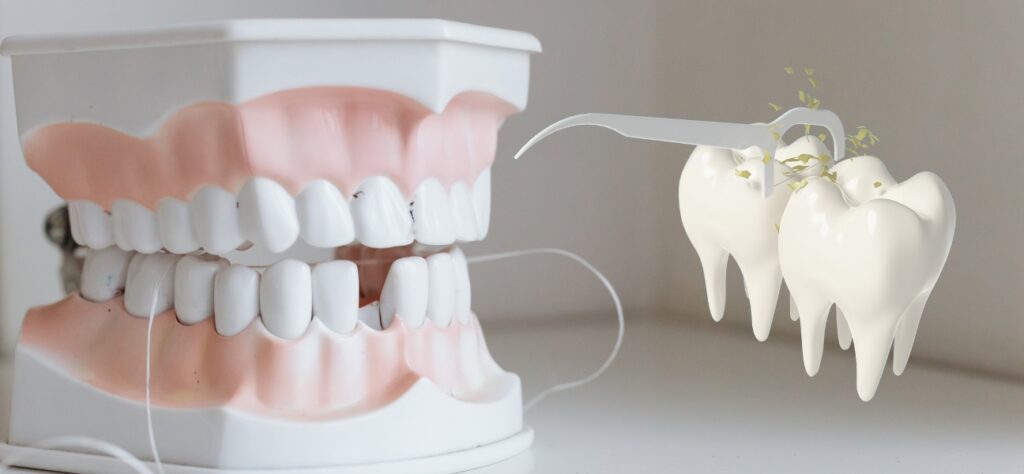
Before you start flossing, it’s important to have the right tools and set up a comfortable environment. This preparation ensures that your flossing routine is both effective and efficient. We know it’s hard to stick to a flossing regimen, but doing so will set you up for success!
Choosing the Right Floss and Floss Threaders
When it comes to flossing All-On-4 implants, the type of floss and threaders you use can make a big difference. Experts recommend using an 18-inch piece of unwaxed floss, as it is less likely to shred and can easily navigate around the implants. Floss threaders are also crucial for reaching tight spaces and ensuring thorough cleaning.
| Tool | Description | Importance |
|---|---|---|
| Unwaxed Floss | A long, thin thread designed to clean between teeth and implants. | Prevents shredding and effectively navigates around implants. |
| Floss Threaders | Tools that help guide floss under and around implants. | Essential for reaching hard-to-access areas. |
| Toothbrush | Used for brushing teeth and implant surfaces. | Complements flossing by removing plaque from broader areas. |
| Toothpaste | Contains fluoride to strengthen tooth enamel. | Supports overall oral hygiene when used with a toothbrush. |
Using the right tools ensures that your implants remain clean and healthy, preventing potential issues like peri-implantitis.
Avoiding Peri-Implantitis with Flossing
Maintaining oral hygiene with all-on-4 dental implants is essential to avoid complications such as peri-implantitis. The best way to clean around these implants is to start by using a floss threader to pass the floss between the implant posts. This technique allows you to gently move the floss around the implants, ensuring that food particles and plaque are removed effectively.
Using a Colgate cushion clean toothbrush along with flossing can enhance your oral care. The cushion-clean toothbrush is ideal for gently cleaning around implants while being gentle on the gums. Remember, implants don’t replace the need for proper hygiene. All-on-4 implants require diligent care to ensure the success of the implants and to maintain optimal oral health. By incorporating these practices, you can enjoy the benefits of your dentures and implants for years to come!
Setting Up Your Workspace for a Comfortable Routine
Creating a comfortable workspace can make your flossing routine more enjoyable and consistent. Find a quiet, well-lit area where you can sit without distractions. Place your floss, threaders, toothbrush, and toothpaste within easy reach on a clean, stable surface. This setup allows you to focus on your technique without interruptions.
By carefully selecting your tools and organizing your workspace, you lay the foundation for an effective flossing routine that protects your investment in a healthy smile.
How To Floss All on 4 Dental Implants

Mastering the art of flossing your All-On-4 dental implants is a crucial step in maintaining their longevity and your overall oral health. Proper technique ensures that food particles are removed effectively, preventing infections and implant failure.
Step-by-Step Flossing Technique
Start by taking a long piece of floss and gently thread it around each implant. Form a “C” shape with the floss, curving it around the base of the implant. Slide the floss under the bridge, moving it back and forth to dislodge any trapped food particles. Repeat this process for each implant, ensuring all surfaces are clean. After flossing, rinse your mouth with an antibacterial mouthwash to eliminate remaining bacteria and freshen your breath. Aim to spend about two minutes on this process to ensure thorough cleaning.
Common Mistakes to Avoid During Flossing
One of the most common errors is using excessive force, which can irritate the gums and lead to infection. Instead, use gentle, deliberate strokes to clean around the implants. Another mistake is rushing through the process. Take your time to ensure every area is properly cleaned. Additionally, avoid skipping areas that are harder to reach, as this can lead to plaque buildup and potential complications. By being mindful of these pitfalls, you can maintain the health and stability of your implants.
| Step | Action | Importance |
|---|---|---|
| 1 | Thread floss around each implant | Ensures thorough cleaning around each post |
| 2 | Form a “C” shape with the floss | Effectively traps food particles |
| 3 | Slide floss under the bridge | Removes food from hidden areas |
| 4 | Rinse with mouthwash | Kills bacteria and freshens breath |
By following these steps and avoiding common mistakes, you can keep your All-On-4 implants in optimal condition, ensuring a healthy and confident smile for years to come.
Maintaining Oral Health and Implant Longevity
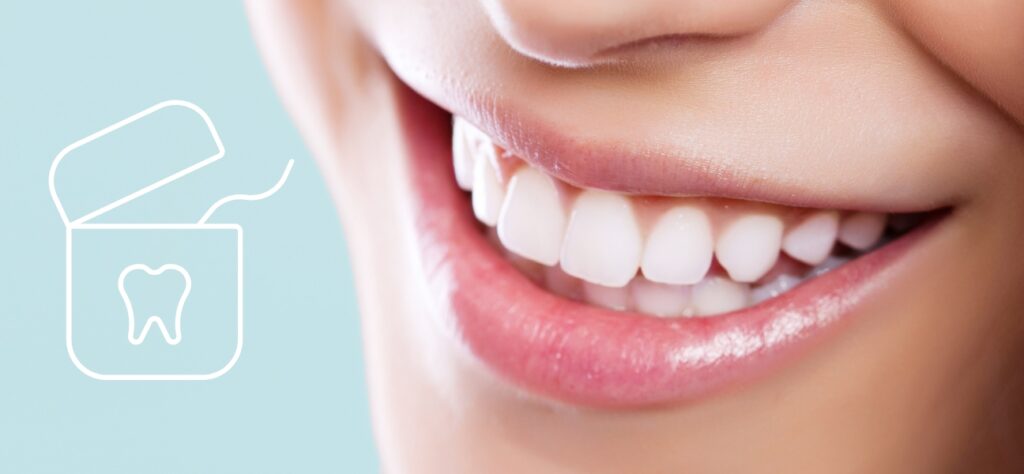
Keeping your mouth healthy is a daily commitment that pays off in the long run. A consistent routine, combined with regular professional care, ensures your implants remain in top condition.
Daily Oral Hygiene Routines
Your daily routine should include brushing twice a day and flossing after every meal. This practice helps remove plaque and food particles, which are key culprits behind gum disease and implant issues. By staying on top of your hygiene, you create an environment where your implants can thrive.
Why is this important?Plaque buildup can lead to infections and implant failure. Regular cleaning prevents these issues, ensuring your implants last for years.
Professional Cleanings and Regular Check-Ups
Even with a solid home routine, professional cleanings are essential. Dentists can spot early signs of problems and provide deep cleaning that keeps your implants healthy. Regular check-ups are your first line of defense against potential issues.
Did you know that studies show proper hygiene can reduce bacterial buildup by up to 70%? This significantly lowers the risk of complications, making your efforts well worth it.
- Brush your teeth twice a day with fluoride toothpaste.
- Floss after every meal to remove trapped food particles.
- Use antibacterial mouthwash to kill bacteria and freshen your breath.
- Schedule professional cleanings every 3-6 months.
Consistency is key. By combining daily care with regular dental visits, you protect your investment and ensure a healthy, confident smile for years to come.
Incorporating Frankfort Smiles Dental for All-On-4 Care

Look no further than our dental practice for personalized care tailored to your All-On-4 dental implants. Our office specializes in providing comprehensive services to ensure the longevity and health of your implants.
All-On-4 Dental Services at Our Frankfort Office
Our practice offers cutting-edge techniques and technology to ensure successful implant treatment. We emphasize the expertise of our team, led by Dr.Zoladz, who maintains high professional standards to prevent implant failure. Regular cleanings and check-ups, scheduled monthly, contribute significantly to long-term implant success.
| Service | Details | Importance |
|---|---|---|
| Immediate Implant Loading | Procedure allowing temporary teeth placement on the same day as surgery. | Reduces recovery time and provides immediate aesthetic benefits. |
| Stringent Quality Standards | Adherence to high standards ensures reliable and durable results. | Minimizes risks and enhances patient satisfaction. |
| Regular Cleanings | Scheduled monthly visits for professional maintenance. | Prevents plaque buildup and potential complications. |
Our services not only reduce the risk of denture-related issues but also offer more natural-looking results. We invite you to schedule a consultation to experience the benefits of our specialized care right here in your community.
Extra Techniques for Deep Cleaning Your Implants
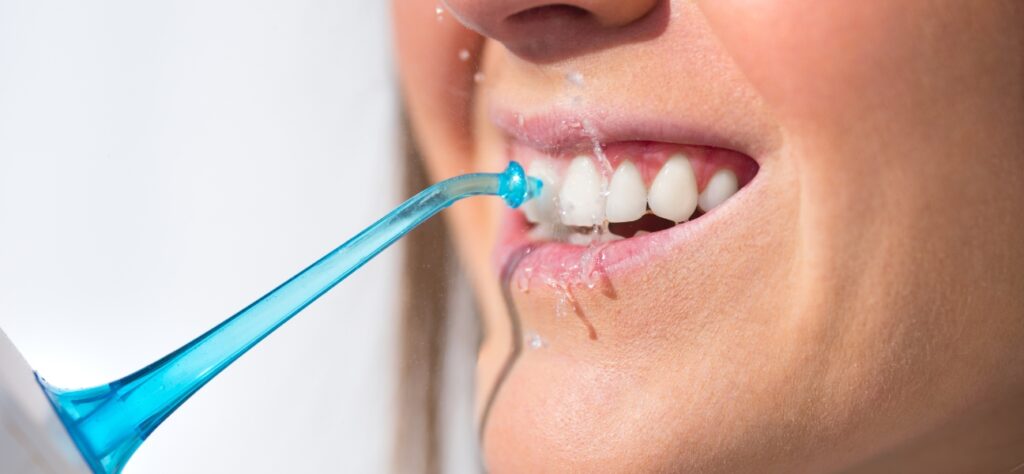
For a more thorough cleaning routine, consider these advanced methods to keep your implants in pristine condition. These techniques go beyond basic flossing to ensure a healthy, vibrant smile.
Utilizing Water Flossers and Oral Irrigators
Water flossers, or oral irrigators, use powerful jets of water to remove food particles and bacteria. These devices are especially effective around implants, where traditional flossing might miss hidden areas. By aiming the water jet at the base of each implant, you can dislodge stubborn debris, promoting a cleaner environment and reducing the risk of disease.
Using Interdental Brushes for Hard-to-Reach Areas
Interdental brushes are small, cone-shaped tools designed to clean between implants and areas where regular floss can’t reach. Gently inserting the brush into these spaces helps remove plaque and food particles, preventing buildup that can lead to infections. Regular use of interdental brushes complements your flossing routine, ensuring a more thorough clean.
Additional Tips to Optimize Implant Care
Enhance your cleaning routine with these practical tips. After flossing, rinse your mouth with an antibacterial mouthwash to kill the remaining bacteria and freshen your breath. Schedule professional cleanings every 3-6 months to ensure your implants remain in top condition. These steps not only protect your investment but also contribute to a bright, confident smile.
By incorporating these advanced techniques into your daily routine, you can significantly reduce the risk of disease and maintain the longevity of your implants. A healthy smile is just a few extra steps away!
Conclusion
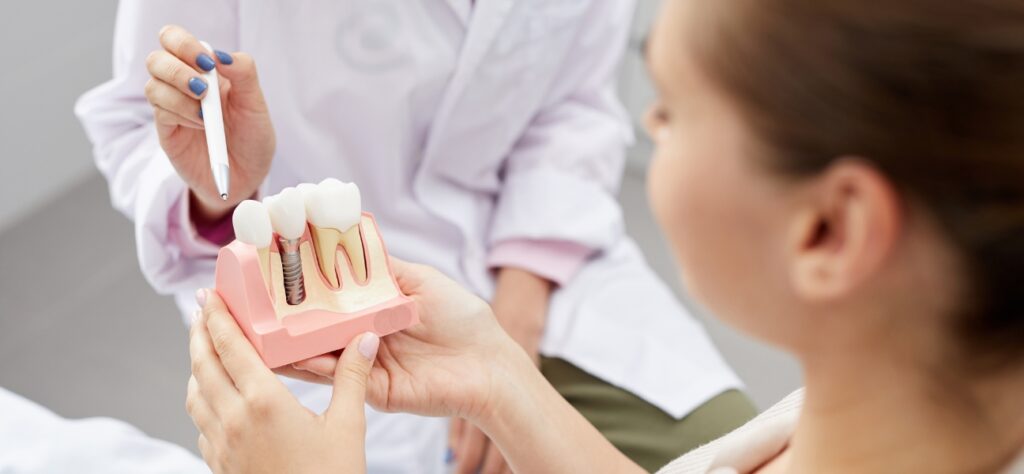
Proper care for your All-On-4 dental implants is a lifelong commitment that yields lasting rewards. By following the step-by-step flossing techniques outlined in this guide, you can prevent infections and ensure your implants remain stable and functional for years.
Regular oral hygiene routines and professional check-ups are vital for maintaining the health of your implants. These practices not only prevent complications but also enhance your overall quality of life. Remember, a well-maintained smile boosts confidence and promotes better health.
For specialized care tailored to your needs, consider reaching out to our dental practice in Frankfort, IL. Our team of experts is dedicated to providing high-quality services to ensure your implants thrive. Don’t hesitate to schedule a consultation and take the first step toward a healthier, more vibrant smile.
Investing time in your oral health today will lead to a lifetime of benefits. Consistent care and professional guidance are the keys to a confident and healthy smile.
FAQ: How To Floss All on 4 Dental Implants

Why is flossing important for All-on-4 implants?
Flossing helps remove food particles and plaque from areas your toothbrush can’t reach. This prevents gum disease and infection, which can lead to implant failure. Regular flossing ensures your implants stay healthy and functional for years to come.
What tools are best for flossing around implants?
Use a floss threader or interdental brushes to clean around your implants. These tools are designed to navigate tight spaces and gently remove plaque without damaging the implant or surrounding gums.
How often should I floss my All-on-4 implants?
Floss at least once a day, preferably before brushing. Consistency is key to preventing bacteria buildup and maintaining good oral health. If food particles get stuck, floss immediately to avoid irritation or infection.
Can I use regular floss on my implants?
While regular floss works, dental floss threaders are more effective for implants. They allow you to maneuver around the abutments and clean hard-to-reach areas without causing discomfort or damage.
What happens if I don’t floss my implants regularly?
Neglecting to floss can lead to gum disease, implant failure, and even infection. Proper cleaning is essential to maintain the longevity of your implants and overall oral health.
How can I tell if I’m flossing correctly?
If you’re flossing correctly, you’ll remove food particles and plaque without causing bleeding or pain. If you notice persistent bleeding or discomfort, consult your dentist for guidance on improving your technique.
Can I use a water flosser on my implants?
Yes, water flossers are a great addition to your oral hygiene routine. They can help dislodge stubborn particles and clean areas that are difficult to reach with traditional floss. However, they shouldn’t replace regular flossing.
How does flossing differ for implants compared to natural teeth?
Flossing around implants requires extra care to avoid damaging the abutments or surrounding tissues. Use a gentle touch and specialized tools like floss threaders to ensure effective cleaning without causing harm.
Can poor flossing habits lead to implant failure?
Yes, inadequate flossing can lead to implant failure by allowing bacteria and plaque to accumulate. This can cause infection and damage to the surrounding bone and tissue. Regular, proper flossing is crucial for implant longevity.
How can my dentist help with implant care?
Your dentist can provide personalized cleaning techniques, inspect your implants for signs of wear, and offer professional cleanings to ensure your implants remain in optimal condition. Regular check-ups are essential for maintaining your oral health and implant longevity.

